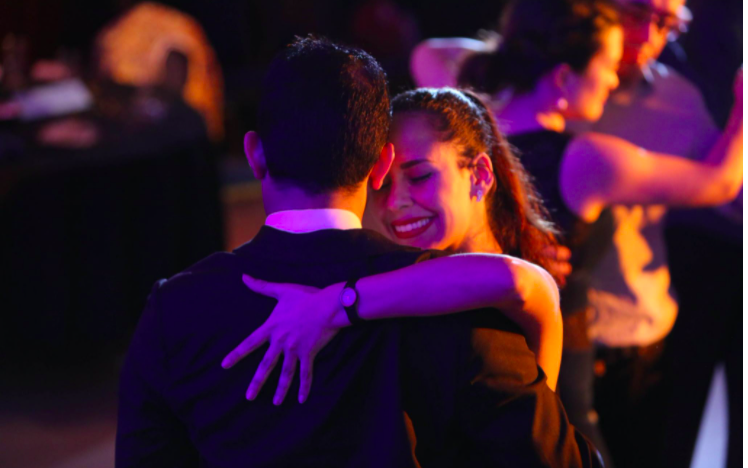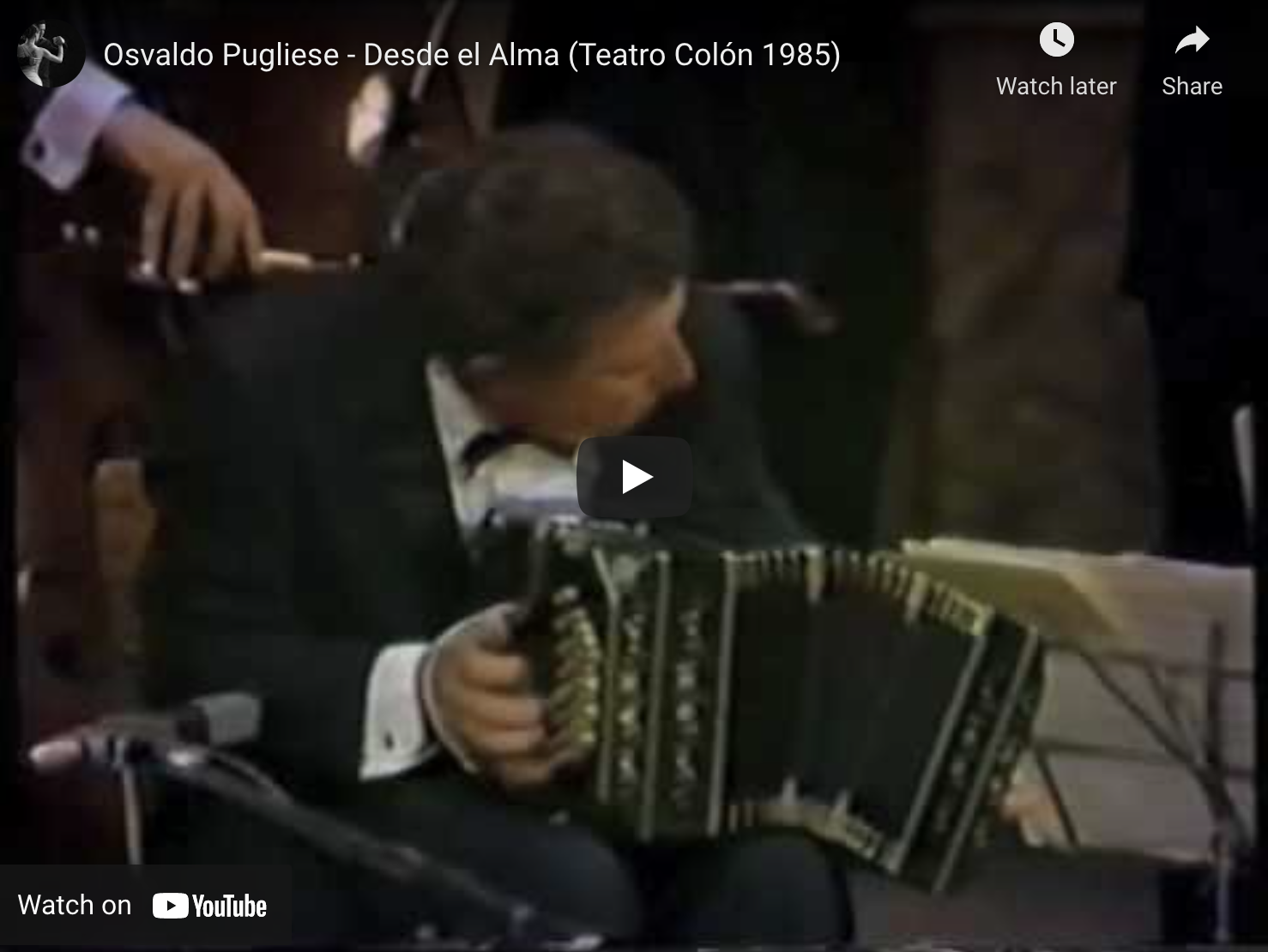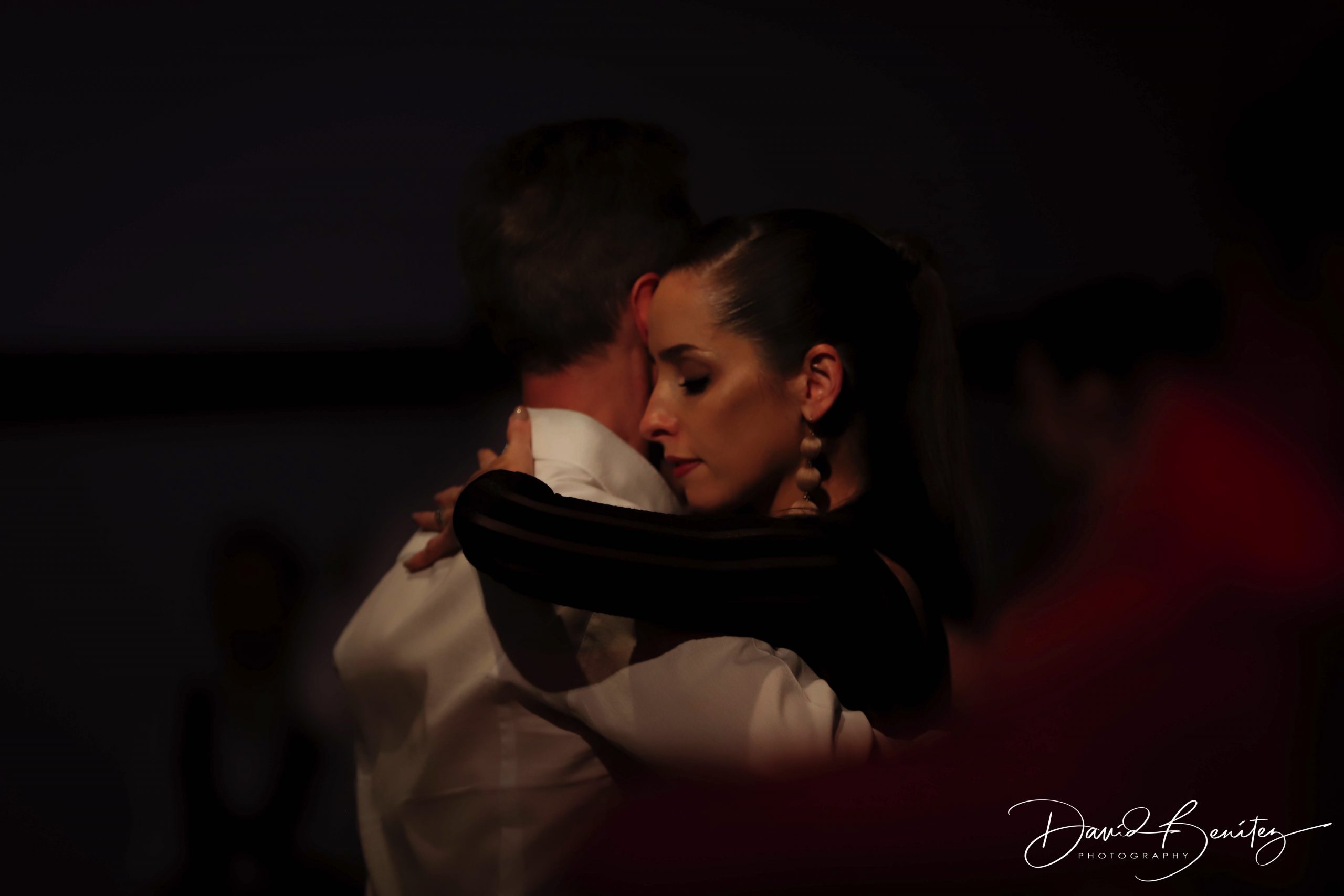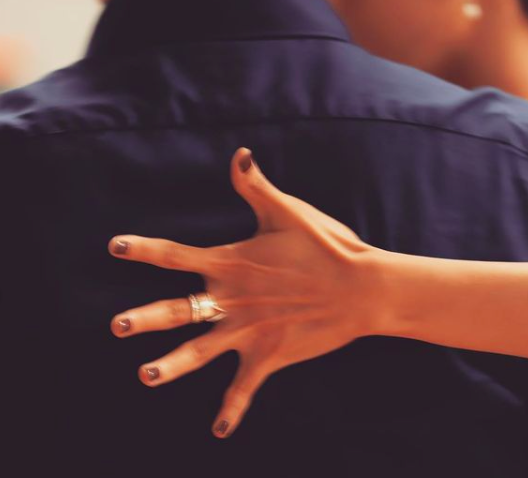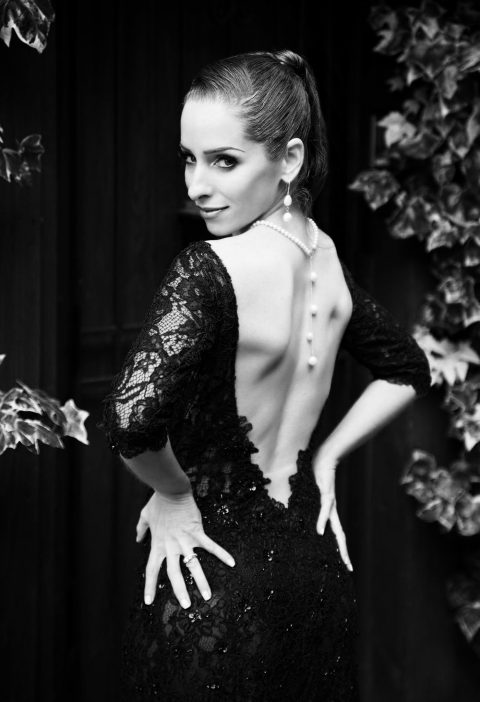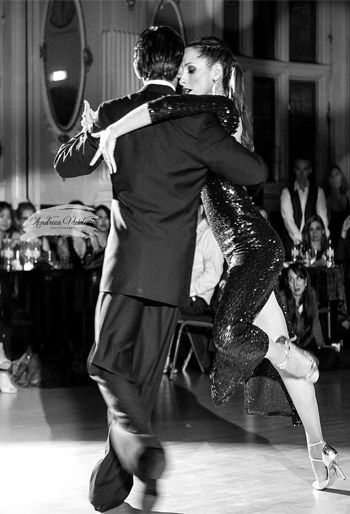You’ve been dreaming of those spine-tingling tangos all week and they are what you left the house for tonight. Wrapped in a snugembrace you have lost yourself in the the soulful violins and the brooding bandoneons.
Now seated on the sidelines of the dance floor, your eyes begin to search the room for your next dance partner.
Suddenly the DJ puts on a milonga track and the mood immediately shifts. As dancers move onto the dance floor, happy smiles appear on faces, and ladies give their hips just a little bit more wiggle.
A carefree, uplifting mood pervades the tango salon but you shift uncomfortably in your seat. You fix your eyes on the floor and begin to fiddle with your shoe strap in the hope that someone doesn’t ask you to dance. Especially – you silently pray – the one you’ve wanted to dance with all night …
Milonga. The music is happy, the steps playful… so why do you find it so hard to let your hair down!
Maybe its because you’ve had very little experience of milonga and you’re not quite sure how to approach it. Or maybe it is because you *have* had experience of milonga … and that’s precisely why you want to avoid it! Because as most people who have been dancing for a while will know with milonga:
“When it is good it is very very good, but when it is bad it is horrid.”
An amazing milonga tanda is something you’ll not forget in a hurry. A sense of flying through every step, an effortless understanding of your partner, somehow knowing in advance what your partner will lead. Unfortunately a bad milonga can also stay with you for quite some time too, and for all the wrong reasons!
Supposedly the carefree cousin of the tango family, milonga is a challenging dance, and “carefree” is sometimes far from how we feel when we dance it!
With experience this, of course, changes and believe me, when it does, it is worth the wait But does it have to take many years until this time comes? Or is there a way we can approach the learning process so that we can ease ourselves into milonga a little more gently?
Here are a few tips for those of you have found yourselves in the above predicament.
LEADERS
Leaders tend to find milonga more difficult than tango. There are of course exceptions. Those who just seem to have a knack for it or fall in love with milonga so much that it carries them through.
We had one student who said that he actually would prefer it if the DJ played milonga all night long and would be happy to dance milonga exclusively. And you could definitely see him come alive when dancing milonga.
My recommendation to those new or nearly new to milonga, is to get a good foundation in tango first. Once you’re familiar with the principles of the lead/follow of tango, milonga is quite a natural progression.
Secondly, try to keep it simple. It is not the steps you should be focusing on but the lead and the music. Milonga steps can be a lot less intricate than tango steps.
The challenge is that generally speaking milonga is faster than tango, giving you less thinking time. But don’t let your movements accelerate out of control. Don’t go faster than necessary, pace yourself and keep calm!
Don’t reinvent the wheel. There are some enticing combinations to learn in milonga but there may well be steps that you have already learnt in tango that work really well with the milonga rhythm. So you may not have to learn everything from scratch.
And finally (and amazingly this does happen and especially in milonga) don’t keep dancing if you feel that your follower has lost you! Don’t be afraid to pause so that you can re-establish the connection with your partner again.
FOLLOWERS
Followers also generally find milonga more challenging than tango. I’ve even heard it said that milonga is more difficult for the follower than for the leader. Not something you hear very much in tango!
Once again, a good foundation in tango is important as you need to be familiar with the principles of following the leader’s torso and not anticipating.
For me, the best way to follow milonga well is to relax. Unfortunately however, this is easier said than done. For a lot of people, just telling telling yourself to relax repeatedly can produce the opposite effect! Instead of trying too hard to relax, I find it really helpful to focus on something. Let yourself get drawn into the music, focus on your breathing, focus on your partner’s breathing.
And if you’re still find it hard to follow your partner snuggle up a bit closer to your partner. The closer the embrace, the easier it is to feel your partner’s lead.
And of course, for both leaders and followers, practice, practice, practice! Milonga isn’t a dance that is easy to bluff. Most of the music played at milongas* will be tango and the same is true of classes. You can spend a lifetime exploring tango. But if you want to enjoy this playful antidote to tango, you will need to dedicate some time studying milonga.
OUR TWO-WEEK MILONGA COURSE
We want you to LOVE dancing milonga! And to leap to your feet when you hear it played.
This Saturday and next, we’re running a Milonga Course, exploring the steps, technique and music, and very simple tricks to start playing and improvising.
We’ll break everything down into bite-sized pieces so you can stop stressing and start doing what milonga was invented for … having fun!
When: Saturday 6 & 13 June 2015
Time: 1 – 3 pm (plus 30 minutes FREE mini-practica)
Where: Marshall Street Leisure Centre, 15 Marshall Street, SOHO, W1F 7EL (5 minutes walk from Oxford Circus tube; round the corner from Carnaby Street)
Level: Improvers & Intermediate Dancers
Price: £47 – 2 weeks; £25 – 1 week
No partner needed. No need to attend both weeks! Places offered on a first come first served basis!
Simply contact us too book your place.
*Milonga is the name of the place we go to dance tango (ie tango salon). It is also the name of the upbeat, playful rhythm that is part of the tango family. It is usually possible to work out from the context which one of these meanings is being spoken about.

